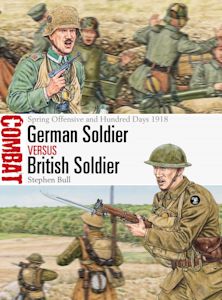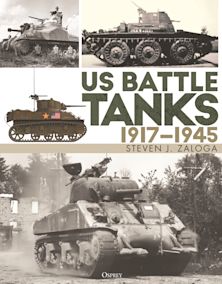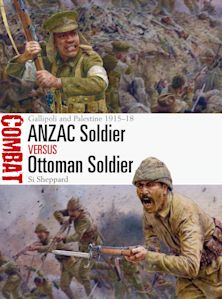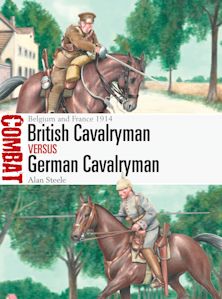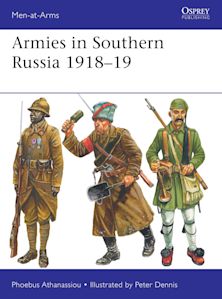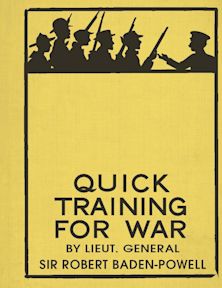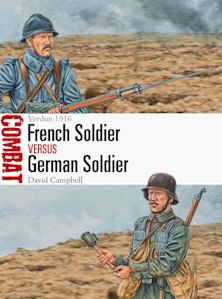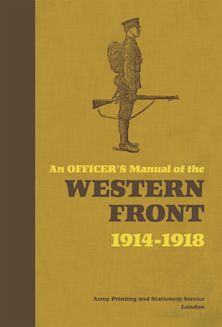Osprey Publishing Home
Mark IV vs A7V
Villers-Bretonneux 1918
Mark IV vs A7V
Villers-Bretonneux 1918
- Delivery and returns info
-
Free CA delivery on orders $40 or over
Description
In March 1918 the Germans launched a series of massive assaults in a bid to break the deadlock on the Western Front and win the war. By this time the British armoured forces had seen extensive combat. The Germans, though, lagged behind in developing armoured fighting vehicles; the March offensive saw the first deployment of the Germans' own design, the A7V. Seeking to capture the important road hub of Amiens, on 24 April the Germans overran Villers-Bretonneux, but were soon halted by Allied ground forces. As three British Mark IV tanks moved up to support a counterattack to regain the town, three German A7Vs arrived on the scene, triggering history's first tank-versus-tank battle.
With two of the British Mark IVs being machine-gun-armed 'females', both were outgunned, and withdrew after the lead A7V, No. 561 'Nixe', damaged them. The remaining 'male' Mark IV, 'A1', equipped with two 6pdr cannons, succeeded in disabling 'Nixe', and the remaining pair of German tanks withdrew. As the only operational tank now on the battlefield, the Mark IV 'male' attracted German artillery fire; as it withdrew, seven British Whippet light tanks engaged the German infantry, only to be attacked themselves by A7V No. 525 'Siegfried' and German artillery.
The German A7V and the British Mark IV were similar in weight, size, and speed, but differed significantly in armour, armament and manoeuvrability. The A7V had thicker armour, and had nearly double the horsepower per ton, but its engines were prone to overheating. The Mark IV's pair of side-mounted 6pdr cannons forced the vehicle to present its side arc to an enemy in order to fire one of its main guns; even so, it had difficulty penetrating the A7V's armour. Possessing twice as many machine guns as the Mark IV, the A7V had a frontally mounted 57mm gun that proved capable of defeating the Mark IV's armour, but the German tank's shape made for a number of blind spots, while the limited traverse of its weapons prompted A7V crews to manoeuvre in a zigzag motion. The Mark IV's rhomboid design proved superior in crossing trenches, climbing obstacles and moving over rough terrain.
As the first tank-versus-tank engagement in history, the fighting around Villers-Bretonneux showcased not only the British Mark IV and German A7V designs, but also the late-war, all-arms environment in which each operated. Although not purpose-built to combat enemy armour, both vehicles proved the viability of such operations, which during the postwar period led to key advances in suspension, armour, gunsights, ammunition, and command and control. While the British continued to develop their armoured forces, German armour development never materialized, and only in the postwar period did they address the issue.
Table of Contents
Chronology
Design and Development
Technical Specifications
The Combatants
The Strategic Situation
Combat
Statistics and Analysis
Further Reading
Index
Product details
| Published | Jan 22 2013 |
|---|---|
| Format | Paperback |
| Edition | 1st |
| Extent | 80 |
| ISBN | 9781780960050 |
| Imprint | Osprey Publishing |
| Illustrations | 40 b/w; 19 col |
| Dimensions | 248 x 184 mm |
| Series | Duel |
| Short code | DUE 49 |
| Publisher | Bloomsbury Publishing |
Reviews

Resources
Discover More
Visit our exclusive member's website to see artwork, maps, and more from this book.

Resources
Book Vote
Tell us what titles you would like to see published by Osprey, then vote for your favourites in our monthly book vote!







